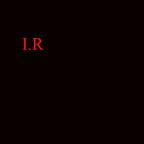Talking Aboriginal design activism
By Callum Clayton-Dixon: Design activism has long been a crucial component of the Aboriginal movement’s tactical and strategic toolkit, part and parcel of the resistance.
Dhanggana?! My mob come from the southern end of the New England Tableland, New South Wales, around Walcha, Woolbrook and the Ingleba Aboriginal Reserve — Ambēyang country. The family bloodlines to which I belong are Dixon (Schmutter), Quinn (Morris), and Pacey. I live in Armidale, Anēwan country. *Ambēyang and Anēwan are two of five languages, traditionally spoken across much of the southern half of the Tableland, which belong to an overarching language community now commonly referred to as ‘Anaiwan’.
I’m currently undertaking a PhD project through the University of Technology Sydney to produce a dictionary and grammar of our ancestral tongue, and have recently written a book titled ‘Surviving New England: a history of Aboriginal resistance & survival through the first forty years of the colonial apocalypse’. In addition to language revival and the reclamation of our history, I also have a passion for design activism.
“Design activism is about using the incredible power of visual communication as a tool for making positive transformation in our world — specifically by raising the voices of individuals & groups that would be normally overlooked in our current communications din.”
— Noah Scalin, The Design Activist’s Handbook (2012)
My experience of design activism has primarily been through involvement in a number of Aboriginal activist collectives including Warriors of the Aboriginal Resistance and Black Nations Rising magazine (first called Brisbane Blacks magazine, and later renamed The Black Rising). Subsequently, having been living on country for the past few years, I’ve endeavoured to apply my design practice to community-based history reclamation and language revival projects here in Armidale.
Over the next while, I’ll be developing a series of blog posts which take a look back through the archive at the Aboriginal movement’s rich history of design activism, as well as exploring topical issues in this space today, and reflecting on my own practice.
Uyidiga lanabura (let’s speak soon)
